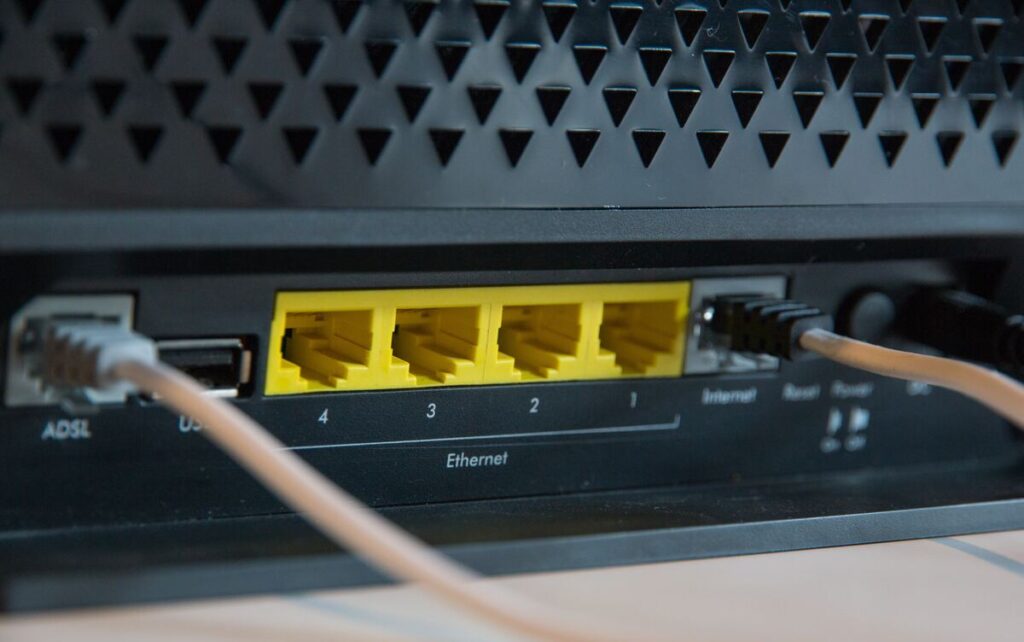In an era where connectivity and communication are paramount, VoIP emerges as a transformative solution for educational facilities. This cutting-edge technology not only facilitates seamless communication but also opens new avenues for collaboration, interactive learning, and resource-sharing. Join us on a journey into the realm of VoIP for education, where innovative communication solutions redefine the classroom experience.
Highlights
What is VoIP?
VoIP, or Voice over Internet Protocol, is a communication technology that enables phone calls through a broadband internet connection instead of traditional landline service. Also known as Voice over IP (Internet Protocol), VoIP utilises an open standard to establish calls over the internet. In a typical setup, a router connected to the internet is used along with a handset or business phone system, transmitting speech through the internet, differing from traditional landline services.
The key distinction lies in the technology underpinning VoIP—internet connectivity replaces physical landlines. Service providers employ VoIP to deliver telephone services to customers, eliminating the need for the installation and maintenance of physical phone lines and equipment. VoIP not only facilitates high-quality calls but also offers advanced features typically unavailable in traditional landline services, making it a versatile and modern communication solution.

What departments in education can utilise VoIP?
Voice over Internet Protocol (VoIP) is crucial for education departments for several reasons, revolutionising communication and collaboration within academic institutions. Here’s why VoIP is important for education departments
Administration
by introducing VoIP into the administration department in your education facility you can expect to improve efficiency and flexibility into various processes. One advantage is the streamlining of internal communication among administrative staff.
VoIP systems offer features like call routing, voicemail-to-email, and virtual phone numbers, allowing for more organised and easily manageable communication channels. Administrative tasks, such as coordinating meetings, disseminating information, and handling inquiries, become more streamlined and responsive with these features.
Faculty and Teaching Staff
VoIP technology offers substantial benefits for the faculty and teaching staff of educational facilities, enhancing communication and collaboration in various ways. VoIP facilitates seamless and cost-effective communication, enabling educators to connect with colleagues, students, and parents through voice, video, and messaging.
Features such as virtual phone numbers and call forwarding provide flexibility, allowing teaching staff to stay connected regardless of their physical location. VoIP also supports the integration of communication tools with other applications, enhancing efficiency in lesson planning, grading, and collaboration on educational projects.
Student Services
VoIP will play a pivotal role in optimising student services within educational institutions, offering a range of features that enhance communication and support.
One significant advantage is the ability to establish efficient and cost-effective communication channels for student inquiries, support services, and administrative tasks. Virtual phone numbers, automated attendants, and call routing features streamline communication, ensuring that students can easily connect with the appropriate departments.
IT Department
VoIP’s advanced features, such as call analytics, call recording, and automated call routing, provide valuable insights for IT staff, enabling them to monitor and analyse communication patterns, troubleshoot issues more effectively, and enhance overall system performance.
Security and Safety
Significantly improve security and safety measures by providing innovative communication solutions and enhancing emergency response capabilities. VoIP systems offer features that can be crucial in emergency situations, such as automated emergency notifications, mass communication capabilities, and location-based routing. These features enable swift dissemination of critical information to students, faculty, and staff during emergencies.
Remote Learning and Virtual Classrooms
The flexibility of VoIP ensures that students can participate in virtual classrooms using various devices, fostering accessibility and accommodating diverse learning preferences. Features like screen sharing, file sharing, and interactive whiteboards enhance the virtual learning environment, enabling educators to deliver dynamic and engaging lessons.
Community Engagement
Enhance communication channels, connecting the institution with students, parents, alumni, and the broader community. VoIP facilitates outreach efforts, such as hosting virtual town hall meetings, informational webinars, and community forums, enabling stakeholders to participate from various locations.
Key Components of VoIP
There are many different components that contribute to the successful deployment of a VoIP system such as SBCs (session border controllers), database services, a strong SIP network with SIP services as standard, Gateways etc.. however, this is all for your chosen provider to worry about! For the end user, all you need to ensure is that you have a strong internet connection in-place and that you have VoIP compatible hardware. By using a company such as Fuse 2, all of these elements and components are handled for you from the secure SIP network and gateways to the ordering of additional hardware if needed.

Difference between VoIP and Traditional Communication in Education
Benefits of VoIP in Education:
- Enhanced Security & Privacy
- Flexible and Scalable
- Omni-Channel Functionality (phone system can be integrated with desk phones, mobiles, laptops etc…)
- Better Control on your communications (internal & external) with dynamic analytics and reporting
Benefits of Traditional Communications:
- Easy to train new staff on
- Doesn’t rely on the internet – if your internet is down, your phones still work
Things to consider when choosing the right VoIP system
VoIP systems need to be tailored to the specific needs of an educational facility and as you may prioritise features such as virtual classrooms, seamless communication between staff, and integration with educational tools. On the other hand, for call centres VoIP systems may focus on call handling features, analytics, and scalability to efficiently manage high call volumes.
Understanding your unique requirements is paramount in selecting the right VoIP system.
Budget
If budget considerations are a top priority, finding a VoIP system that delivers cost-effectiveness without compromising essential features. Such as, a suitable VoIP solution may prioritise affordability while still offering essential features like virtual classrooms, reliable communication channels, and integration capabilities.
Compatibility with current systems
If you already have a bunch of 3rd party systems within your organisation then you will need to consider a seamless integration with existing infrastructure that enhances operational efficiency and minimise disruptions.
Quality of service
Quality of Service (QoS) is a critical aspect of a VoIP system, ensuring that voice and video communications are clear, reliable, and uninterrupted.
Security & Privacy
Security and privacy are as important as any other factor you may consider due to safeguarding sensitive communication data which could cause devastating harm if not implemented.
Ease of Use & User Training
Ensuring your VoIP system is easily usable is also important, in educational facilities especially you’ll find a various age demographic which everyone has a different experience with technology so the easier to use and user training the more efficient your workforce.
Mobile Accessibility
As the workforce becomes increasingly more mobile, providing a seamless experience on smartphones and tablets is essential for educational departments for now and the future.
Emergency Application
An emergency application involves careful consideration of various features and functionalities to ensure it effectively serves its purpose during critical situations such as a fire or life threatening situations.
Collaboration Features
You will need to consider this for enhancing communication, productivity, and teamwork within a place of education if you’re also needing to collaborate with remote working colleagues.
Regulatory Compliance
Regulatory compliance is a critical aspect of any VoIP system, ensuring that it adheres to laws and regulations in your region relevant to its operation and user data.
Future-Proofing
Future-proofing your VoIP system involves designing it in a way that anticipates and accommodates potential future changes, advancements, and challenges.
Benefits of using VoIP in Education
VoIP technology leverages the internet to transmit voice and multimedia content, providing a cost-effective alternative to traditional phone systems. Educational institutions can significantly reduce communication expenses by utilising VoIP for both internal and external communications along with improving their communication performance, seamlessly and effortlessly with Fuse2’s help.
Reduce Costs
VoIP in an educational facility can significantly reduce communication costs by ditching traditional phone systems that often involve substantial expenses with hardware, maintenance, and long-distance calls.
VoIP, on the other hand, utilises the existing internet infrastructure, eliminating the need for a separate phone network and lowering both installation and operational costs. The ability to make calls over the internet enables institutions to bypass traditional telecommunication charges, especially for long-distance and international calls.
Efficient Communication
Unlike traditional phone systems, VoIP leverages the internet to transmit voice and multimedia content, offering a more cost-effective and versatile communication solution.
Greater Scalability
One of the primary advantages of VoIP scalability is its flexibility in handling fluctuations in user numbers. As educational institutions experience growth, whether in student enrollment or faculty expansion, VoIP systems can effortlessly scale up to incorporate additional users without the need for significant infrastructure changes.
Seamless with Collaboration Tools
By combining VoIP with collaboration platforms, such as video conferencing, instant messaging, and document sharing, educational facilities can create an interconnected environment that fosters collaboration among faculty, staff, and students.
Improved Accessibility and Mobility
The ability to access communication services from anywhere with an internet connection. Whether faculty members are working from home, students are studying remotely, or staff are on the go, VoIP allows seamless connectivity.
VoIP also supports mobility through features like softphones and mobile applications. These tools enable users to make and receive calls, participate in virtual meetings, and access voicemail from their smartphones or laptops, regardless of their physical location.
Integration with existing Educational Systems
One key aspect of integration is the compatibility of VoIP systems with existing IT infrastructure. VoIP can be seamlessly integrated with other communication tools, email systems, and databases commonly used in educational facilities.
Reliability and Redundancy
VoIP systems offers redundancy through failover mechanisms. In the event of a network outage or technical issue, VoIP systems can automatically switch to alternative routes or backup servers, preventing service interruptions.
Improved Security Measures
Encrypted communication protocols safeguard voice and data transmissions, ensuring the confidentiality of sensitive information.
Access control mechanisms and authentication protocols restrict system access to authorised users, minimising the risk of unauthorised entry. Integration with firewalls provides an additional layer of defence against external threats, monitoring and controlling network traffic.
Global Connectivity
Serves as a powerful enabler for global connectivity within educational institutions, fostering communication and collaboration on an international scale. By leveraging the internet as the communication medium, VoIP eliminates geographical barriers and facilitates seamless connectivity among students, faculty, and staff located around the world.
Adaptability
VoIP adaptability is its compatibility with various devices and operating systems. Whether users prefer desktop computers, laptops, smartphones, or tablets, VoIP systems ensure that they can access communication services across a range of platforms, promoting accessibility and inclusivity.
Parent-Teacher Communication
Parent-teacher communication is the ability to conduct virtual meetings and conferences. Through high-quality audio and video capabilities, parents can easily participate in discussions with teachers, regardless of their physical location. This flexibility is especially beneficial for working parents or those unable to attend in-person meetings, ensuring broader participation and engagement.

Education facilities already using VoIP
Many educational facilities have caught on to the fact that VoIP is the best way forward for their communications – both in functionality and in cost savings! Currently in the UK only around 25% of schools and trusts are using VoIP systems however, by 2026 this statistic is estimated to be around 80%. This large increase is due to the ISDN switch-off commencing in 2025 which will bring all traditional analog communications to a complete stop.
We’re a trusted VoIP provider for Education Facilities
Being members of the ANME (Association of network managers in education) allows us to collaborate with educational leaders across the country, supporting them with all of their telecoms query’s. Due to our presence within the ANME community, we are once again exhibiting at the Schools and Academies Show in London on the 17th May 2023. The Schools & Academies Show brings together thousands of school leaders to connect, share new ideas and debate the biggest issues facing the education community including unified communications.
VoIP in Education Case Studies
At Fuse 2, we work with some of the biggest academies and trusts within the UK providing all their telecoms needs. For example, one of our renowned customers is the Astrea Academy who are a multi-academy trust with 27 facilities across the UK, making them the 13th largest academy in the country. The Astrea Academy originally had a hybrid voice system.
However, they had been experiencing a range of service issues, including hacking and hardware failures. The decision was made to look for alternative options, including the transfer of VOIP call processing via the Microsoft Teams System. The first supplier who was visible from their research was Fuse 2. To read more about how Fuse 2 delivered the seamless and cost effective solution.






